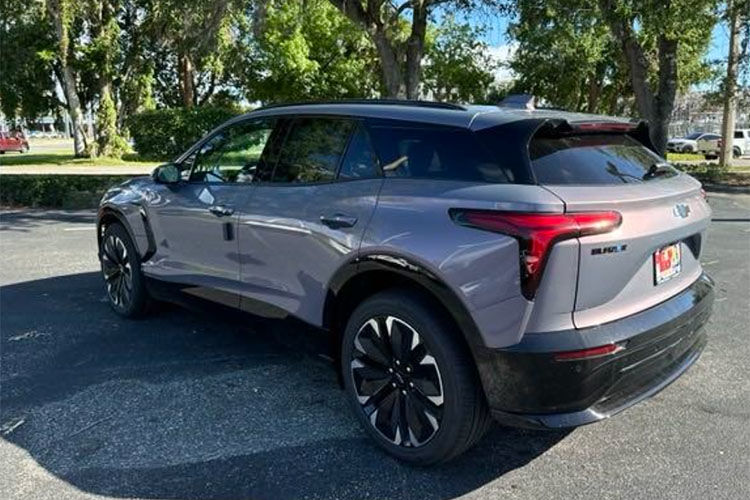Exploring Your Fleet EV Charging Options


Exploring Your Fleet EV Charging Options
For every business operating a commercial fleet, whether it comprises 3 or 300 vehicles, the combination of stringent mandates, strict regulations, and the imperative to minimize pollution compels fleet owners and managers to explore net-zero operations as an unavoidable necessity. One of the options is fleet electrification, and a critical aspect of commercial EV operations is charging the batteries.
The right EV charging options can significantly affect the operational efficiency and sustainability of commercial fleets, making the selection of EV charging solutions a critical decision for fleet managers. Let’s start with the basics.
Understanding the Basics of Fleet EV Charging
Fleet EV charging is not a one-size-fits-all proposition. Different fleets have unique needs based on vehicle types, usage patterns, and operational goals. Understanding the various charging levels and standards is crucial to tailoring the EV charging setup for a fleet. But first things first—the plug.
NACS vs. CCS
If you’re looking into fleet electrification, you’ve likely heard much ado about plug and protocol compatibility, specifically CCS vs. NACS (Tesla-style). The Combined Charging System (CCS) and the North American Charging Standard (NACS) are the two most common charging standards for EVs in North America, with the older SAE J1772 connector still in use on some light-duty vehicles.

The SAE J1772 is used in Level 1 and 2 charging systems.

The CCS 1 and 2 styles support Level 1, 2, and DC fast charging.

The NACS (Tesla-style) employs a hybrid connector, J3400, that supports Level 2 and DC fast charging.
NACS is often associated with Tesla, with CCS being the rival standard. However, as Ford and GM are also adopting the NACS, nearly every other EV manufacturer is following suit. Although compatibility between NACS and CCS is possible via a common plug adapter, this is becoming a moot point as the NACS, or Tesla-style, plug is quickly emerging as the de facto standard for North America.
So, no matter the style plug on an EV, adapters eliminate the worry of compatibility issues. Not to mention that NACS plugs will be standard equipment on most EV vehicles by 2025.
What Is Level 1 Charging?
Level 1 EV chargers are simple units that plug into a standard 120v electrical outlet at one end and come with a North American standard J1772 connector at the other. Many units offer a NACS adapter, which is a simple, low-cost solution for light-duty EV charging.
Charging speed: Adds about 2 to 5 miles of range per hour of charging, making it the slowest charging option.
Best for: Fleets consisting of light-duty vehicles traveling up to 40 miles per day, with overnight parking or longer downtime periods. Ideal for supplementary charging or scenarios with minimal daily mileage.
Purchasing insights: These portable chargers can easily be purchased online or from automotive retailers. They provide flexibility and ease in charging operations without the need for significant setup or infrastructure overhaul.
What Is Level 2 Charging?
Level 2 charging stations are a more robust solution than Level 1. They provide electricity at 240V, similar to what large appliances use in a home, facilitating quicker charging times and increased efficiency. Level 2 chargers are available in both portable plug-in style and permanent installation. The plug-in styles will use one of the SAE 240v plugs, while installation requires the services of a qualified electrician.
Level 2 is considered by many to be the threshold for medium-duty commercial EVs.
Charging Speed: Capable of adding about 10 to 60 miles of range per hour of charging. The charging speed can vary based on the EV's onboard charger.
Best for: Fleets consisting of light and medium-duty vehicles traveling up to 400 miles per day (or battery limit). It is suitable for overnight charging or top-ups throughout the day. Obviously, vehicles traveling further during a work shift will require longer to charge.
Purchasing insights: These chargers can also be purchased online or from specialized EV equipment suppliers or automotive retailers. A mobile configuration presents a flexible option, allowing businesses to utilize advanced charging capabilities without the commitment to a fixed location.
Subscription services for Level 2 charging are increasingly prevalent, providing the equipment and ongoing maintenance and updates for a monthly fee. This model is particularly appealing for organizations looking to minimize upfront investment while ensuring their charging infrastructure remains cutting-edge.
What Is DC Fast Charging?
Levels 1 and 2 charging deliver alternating current (AC) to your vehicle. Because batteries operate on direct current (DC), your vehicle must convert the incoming AC to DC, creating a bottleneck. DC fast charging (DCFC), sometimes referred to as rapid or ultra-fast, delivers a large quantity of DC current from the charger, eliminating the need for your car to make the conversion. This results in significantly faster charging than Level 1 or Level 2.
The DCFC technology involves much more power and requires a more specialized, high-capacity infrastructure.
Charging Speed: Can add 60 to 100 miles of range in about 20 minutes, depending on the station's power output and the vehicle's maximum charging capacity.
Best for: Fleets with medium and/or heavy-duty vehicles. DC Fast Charging is also better suited for light-duty fleets with high-utilization schedules that require quick turnarounds. It is ideal for routes with accessible DC fast charging stations or for emergency top-ups.
Purchasing insights: The purchasing options available to EV fleets seeking DC fast charging stations are diverse and must be tailored to your company’s specific situation.
When planning to install a DC fast charging station at your company site, the primary considerations would involve station capacity: Can your facility draw 200V-920V? Do you have the physical space required for station installation?
Key Considerations for Fleet EV Charging Options
Once you’ve assessed which charging level will meet your needs, the next decision is whether to install on-site charging infrastructure or rely on public charging stations.
Installing On-Site Fleet Charging Stations
One of the primary advantages of depot (on-site) charging is the potential for cost savings. In comparison to on-route or public charging, depot charging can be more economical due to the ability to optimize charging schedules during off-peak electricity rate periods, thus lowering operational costs[1]. Additionally, on-site charging can significantly improve operational efficiency by ensuring that vehicles are charged and ready for their routes according to the fleet's schedule, without depending on the availability of public charging infrastructure[1].
Moreover, on-site charging infrastructure allows for a controlled charging environment, where fleet operators can directly manage how, when, and to what extent vehicles are charged. This can lead to increased reliability and the ability to rapidly respond to any operational exigencies without being constrained by external factors such as the availability of public charging stations[1].
There are also several government incentives, such as the federal Alternative Fuel Infrastructure Tax Credit and California’s Charging Station Grants, that can lower the upfront costs of EV charging installations. However, the cost-benefit analysis of different EV charging options requires careful consideration of both upfront and ongoing maintenance costs.
For fleets specifically, companies like Eaton, EVESCO, Kempower, and several others, offer a comprehensive line of EV charging station solutions designed to meet the diverse needs of vehicle fleets. These solution providers possess a wealth of knowledge that’s indispensable when it comes to the assessing and planning stages of your fleet electrification journey.
There are also organizations, such as Merchants Fleet, Dynamon, and CA.gov that provide EV transition consulting. They can help with many of the questions you will have concerning everything from product to planning to financing.
Public EV Charging for Commercial EV Fleets
However, fleets that operate over larger geographic areas or serve long-distance routes may benefit from the flexibility offered by public charging stations. For these fleets, reliance on public charging can mitigate the need for significant upfront investments in charging infrastructure, especially if their operations are spread out or if they lack a centralized depot[2].
Furthermore, fleets with vehicles that feature varying charging connector types or those that require rapid charging capabilities while on the road may find public fast charging stations particularly useful[2]. It's also worth noting that public charging infrastructure is continually improving, with increasing numbers of fast charging options becoming available, which could serve as a viable option for fleets needing to ensure their vehicles can be quickly charged throughout their operational areas[2].
Companies with EV fleets should consider their specific operational needs, routes, vehicle types, and cost implications when deciding between on-site and public charging. Those with predictable routes and schedules may find on-site charging to be a more reliable and cost-effective solution, while fleets with variable routes or those operating across large geographic areas may benefit from the flexibility of public charging infrastructure. This evaluation process is essential to optimizing operational efficiency, minimizing costs, and ensuring the reliability of the EV fleet.
Conclusion
Choosing the right EV charging solution is pivotal for fleet managers embarking on the electrification journey. By understanding the basics, evaluating infrastructures, considering financial and regulatory aspects, and learning from industry best practices, fleets can navigate the complexities of EV charging. The journey towards fleet electrification is not without its challenges, but with careful planning and the right resources, it represents a significant step towards a more sustainable, efficient future.
Sources:
Published on: May 21, 2024 Easing Into a Zero-Emission Commercial Vehicle Fleet: How One Hydrogen Truck Can Start a Revolution
Easing Into a Zero-Emission Commercial Vehicle Fleet: How One Hydrogen Truck Can Start a Revolution Exploring Practical Options To Lower Your Construction Fleet's Carbon Footprint
Exploring Practical Options To Lower Your Construction Fleet's Carbon Footprint Propane Powers the Future of Fleet EV Charging
Propane Powers the Future of Fleet EV Charging Electric SUVs: The Overlooked Asset for Your Commercial Fleet
Electric SUVs: The Overlooked Asset for Your Commercial Fleet EVs Hit the Real Street: Conference of Automotive Remarketing 2024 Session Report
EVs Hit the Real Street: Conference of Automotive Remarketing 2024 Session Report






